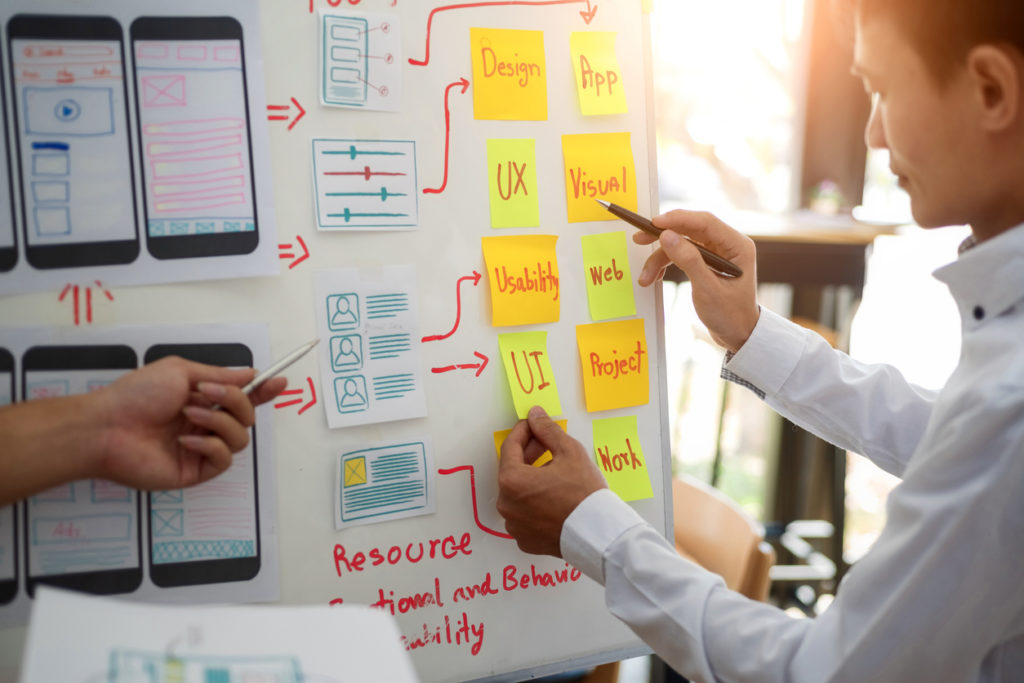Application Modernization: Its Importance and How to Approach It

"*" indicates required fields

The importance of aligning IT more closely with your current business needs cannot be emphasized enough. Companies today spend countless hours—and most of their tech budget, on keeping their legacy systems running. It’s like trying to keep an old, outdated car that has done its time running. While the car may still be mobile, it lacks modern features, is horrendously slow, and requires a good amount of your time and money to stay on the road. Wouldn’t you be better off just buying a new car?
This is exactly how organizations and IT teams need to think about their legacy systems. The good news is that most CIOs are already doing that. According to the 2017/2018 Logicalis Global CIO Survey, legacy systems were the top concern for the over 800 CIOs polled, with more than half of them planning to improve IT infrastructure to overcome problems in legacy software.

The thing about legacy IT is that it is filled with unnecessary complexity and cost and there’s nothing simple or straightforward about it. Legacy systems hinder innovation and productivity, which adds to your IT and business costs. There’s also the continuing cost of maintaining the systems, which consumes most of the budget that a business has allocated to IT.
So, how can organizations and IT teams get out of this situation? “Modernizing” legacy systems would be the obvious choice here.Modernizing a legacy system, also known as application modernization, is refactoring, re-purposing or consolidating a legacy system. The purpose of this is to align legacy system more closely with current business needs. With application modernization, you can new can create new business value from existing systems.
However, the process of legacy modernization is a complex one and it could take several months, or even years, to migrate to a new, modern platform. This is because of the issues and challenges in modernizing legacy systems. What are these issues and challenges? We look at them next.
While it can be hard to part with legacy hardware or software that you have gotten used to, eventually you have no choice but to modernize your legacy system. While modernizing legacy systems is a good thought, it can be a bit of a challenge. This is especially true if your legacy system has existed for more than a decade. While you try to carry out the modernization process, you are likely to come across several challenges and issues. Following are some of the most common challenges and issues in modernizing a legacy system:
Legacy systems feature an outdated program or platform, and this can make it difficult for IT to migrate the data to more recent platform. Often, streamlining the modernization process requires a new set of equipment and training sessions that teach about the new platform.
Modernizing legacy systems can be daunting, especially if your organization has more than one legacy system. Generally, migration of data to the new platform from the legacy system would be carried out in phases rather than at once.
Also, validation will be required for several operational activities.These include bringing in new systems during the interim phase and providing data duplication, complete business coverage with fully serviceable overlapping functionality, and temporary systems for bridging legacy. This can be a challenge on its own.
Costing you both time and money, application modernization can be an expensive exercise. You need to make significant investments and dedicate a considerable amount of your time to modernize a critical legacy system. A complex legacy system could take years to modernize, and then there’s the risk of encountering unforeseen circumstances in the process.
As stated earlier, application modernization can be a complex process. The degree of difficulty varies based on the modernization approach you use. There are several approaches to application modernization and you need to choose one that is right for your company’s needs and goals. To help you make an informed decision, following are 5 of the most common approaches to application modernization with their pros and cons.
This approach to application modernization does not update the old applications but still creates new, modern-looking interfaces for your legacy applications. This is achieved by scrapping information off your legacy applications and presenting it in a graphical interface.
While screen-scrapping can help you to quickly and affordably modernize legacy applications, it does not actually modernize your applications, which means that you will have to maintain not just your underlying applications but also the applications that have been screen-scrapped. This makes maintenance of your applications more difficult, time-consuming and expensive
This involves converting old applications written in outdated programming to a modern programming language. This is a quick way to convert outdate code into modern code without having to learn a new language. The problem with this approach is that it doesn’t change the structure of the outdate application, which leads to limited application capabilities and difficulty in maintenance
As the name suggest, rip-and-replace is an approach to application modernization that gets rid of your old applications and replaces them with new, modern applications created from scratch. This is perhaps the best approach to align IT with business and address your current business needs. Additionally, it leaves you with applications that are easy to maintain and scale as your organization grows. The only disadvantage of this approach is that building new applications from scratch can be time-consuming.
Delaying or ignoring application modernization will only waste your time and money if your legacy applications are hurting the progress of your organization. As seen above, there is no ‘one-size-fits-all’ approach to application modernization and you need to pick an approach that is right for company’s needs and goals. Perhaps, consulting an expert like us would help here.
Percento is a Professional IT Consulting, Implementation and Management firm. To find out how we can help your organization, please contact one of our friendly sales representatives for a review of your system and a comprehensive (No Obligation) proposal of services. Call today toll-free at 800.614-7886 [Austin | Dallas | Houston | League City | Sugar Land | The Woodlands | San Antonio] or email us at sales@percentotech.com.